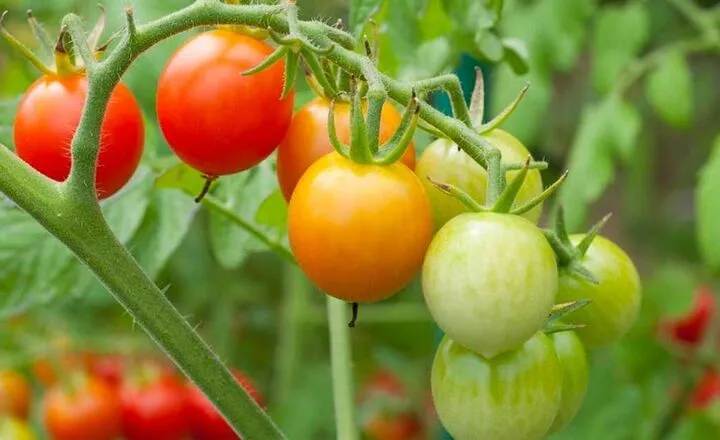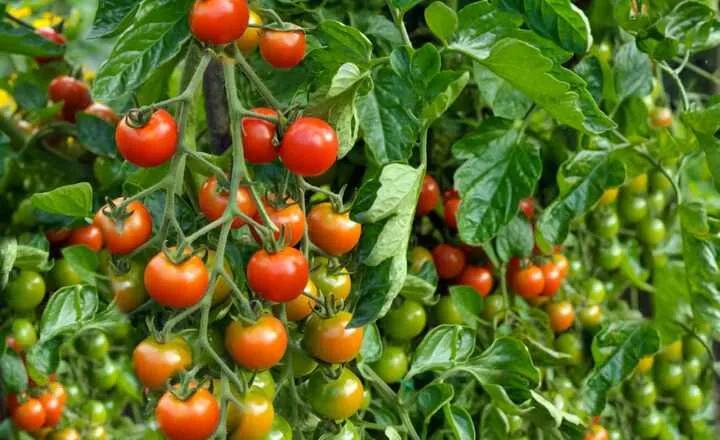The lifespan of a tomato plant can vary dramatically based on its environment and care. In ideal conditions, a determinate variety may live about 45 to 70 days from seedling to harvest, reaching its peak productivity within this brief window.
Indeterminate varieties can thrive throughout the growing season and may continue producing fruit until frost sets in, with lifespans stretching well beyond six months under ideal circumstances.
What is the Lifespan of a Tomato Plant?
The lifespan of a tomato plant varies significantly based on its type and the growing conditions. Determinate varieties tend to have a shorter life cycle, typically producing a single harvest within 45 to 70 days before they stop growing after setting fruit.
These plants usually reach heights of about 4 feet and are ideal for home gardeners looking for a concentrated yield, especially for making sauces or canning. Once the harvest is complete, these plants will decline fairly quickly.
Indeterminate tomato plants have a longer lifespan and can continue producing fruit until the first frost, often stretching their production over several months. They can grow much taller—up to 12 feet—and keep flowering and setting fruit throughout the season.
In tropical climates where they originate, these plants can live for many years, resembling sprawling vines rather than compact bushes. In cooler climates with less sunlight and freezing temperatures, their life span is limited to just one growing season unless grown indoors where conditions can be controlled effectively.
How can you Increase the Lifespan of a Tomato Plant?
To increase the lifespan of your tomato plants, consider growing them in a controlled environment such as a greenhouse or indoors. This allows you to shield them from harsh outdoor conditions like frost and extreme temperatures.
When using a greenhouse, it’s essential to maintain a temperature above 60°F and provide adequate water and fertilizer. Since pollinators may be absent, you should manually assist with pollination by gently shaking the plants or using a small brush to distribute pollen among flowers.
If you’re opting for indoor cultivation, transplanting your garden tomatoes into pots can be an effective strategy. Choose dwarf varieties suited for container growth and ensure they receive ample light—ideally 16 hours per day when young, reducing to 12 hours as they mature.
Maintain soil moisture without over watering and rotate the pots regularly for even growth. With proper care, including maintaining strong trunks and healthy root systems, you can enjoy fresh tomatoes year-round while extending their productive life significantly.
How Old is the Oldest Tomato Plant?
The oldest known tomato plant, which gained fame for its extraordinary size and yield, was cultivated in the experimental greenhouses at Walt Disney World Resort in Florida. While the exact age of this remarkable plant isn’t documented, it is renowned for producing over 32,000 tomatoes, weighing a staggering 1,151 pounds.
Discovered by Yong Huang after its seeds were brought from Beijing, this plant exemplifies what can be achieved with optimal care and conditions. The tomatoes it produced were about the size of golf balls, showcasing not just quantity but also unique characteristics.

For gardeners looking to maximize their tomato yields and extend the productive life of their plants, focusing on high-quality seeds and attentive cultivation practices is key.
How Long Can a Hydroponic Tomato Live?
They can have a surprisingly long lifespan, typically ranging from 8 to 11 months under optimal conditions. Factors such as the quality of the nutrient solution, light exposure, and environmental conditions play crucial roles in determining how long these plants can thrive.
While some hydroponic systems may yield tomatoes for as little as 6 months, others can sustain them for up to 2 years with proper care.
To maximize the longevity of your hydroponic tomato plants, it’s essential to maintain a balanced nutrient solution and ensure adequate light and temperature levels.
Regular monitoring and adjustments can help prevent diseases and nutrient deficiencies that could shorten their lifespan. With the right setup and attention, you can enjoy fresh tomatoes for many months while exploring the fascinating world of hydroponics!
What Is the Lowest Temp a Tomato Plant Can Tolerate?
Tomato plants are quite sensitive to temperature, and while they can survive brief exposure to temperatures as low as 33°F, they are not frost-resistant.
When temperatures drop below 32°F, which marks the freezing point, tomato plants will likely suffer significant damage or die. It’s important for gardeners to be vigilant about protecting their plants during cold snaps, especially in regions where frost is common.
For optimal growth and fruit production, tomato plants thrive best in warmer conditions, ideally around 70°F and above. Temperatures below 50°F can hinder seed germination and stunt the growth of established plants, leading to poor yields.
While some cold-hardy varieties may tolerate cooler temperatures between 50-60°F, they won’t reach their full potential unless grown in more favorable conditions.
What Does Epsom Salt Do for Tomatoes?
It is composed of magnesium sulfate, and can be a beneficial addition to your tomato gardening routine. Magnesium plays a crucial role in photosynthesis and helps strengthen cell walls, leading to healthier plants.
When added to seedlings or mature plants, Epsom salt can enhance nutrient absorption from the soil, ensuring that your tomatoes receive the essential minerals they need for optimal growth.

Its ability to alleviate magnesium deficiency, which often manifests as yellowing leaves. By addressing this deficiency early on, you can promote stronger foliage and improve overall plant vitality.
Conclusion
The lifespan of a tomato plant can vary significantly based on factors like growing conditions, care practices, and the specific variety chosen. With optimal care, these plants can thrive for several months during the growing season, offering a bountiful harvest.
Understanding the importance of seasonal changes and potential pests can help gardeners maximize their yield. Whether you choose to grow determinate or indeterminate varieties, knowing when to plant and how to maintain your tomato plants is crucial for success.
FAQs
What fertilizer do tomatoes need?
Tomatoes thrive best with a balanced fertilizer that provides essential nutrients, particularly nitrogen, phosphorus, and potassium.
Are egg shells good for tomato plants?
Yes, eggshells can be beneficial for tomato plants. They are a great source of calcium, which is essential for healthy plant growth and development.
